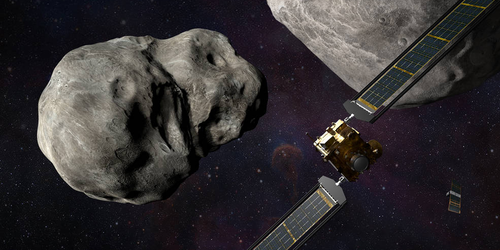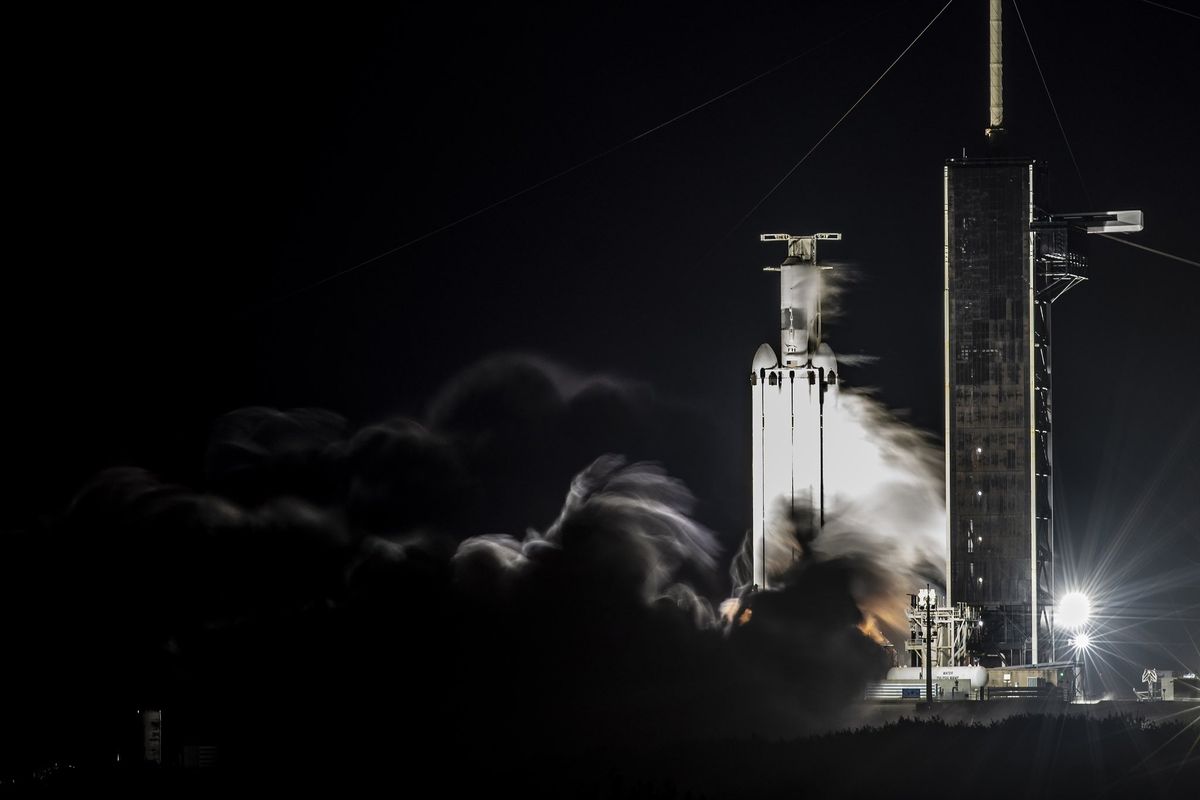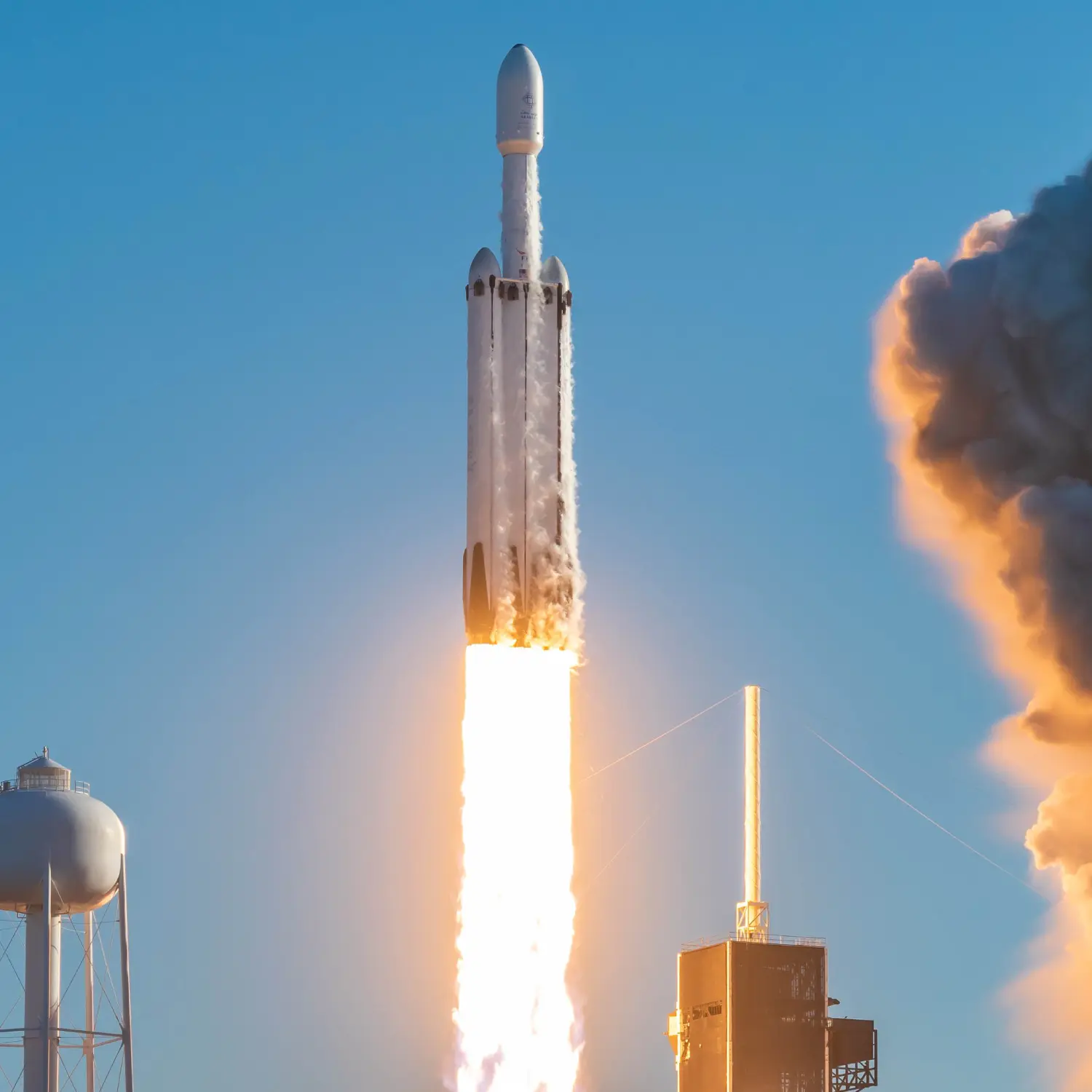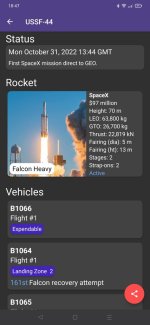You are using an out of date browser. It may not display this or other websites correctly.
You should upgrade or use an alternative browser.
You should upgrade or use an alternative browser.
** The Official Space Flight Thread - The Space Station and Beyond **
- Thread starter Cosimo
- Start date
More options
Thread starter's postsAssociate
- Joined
- 19 May 2010
- Posts
- 1,453
- Location
- Cheltenham

Countdown to DART Impact
In a first-of-its-kind test for planetary defense, NASA’s DART spacecraft is scheduled next week to crash into an asteroid and alter the celestial body’s course.physics.aps.org
would be interesting to know how guidance system compares with a terrain following cruise missile,
eg. redundancy capability , like votiing system on some multi processing aircraft systems
e: what time did it really hit it - it was 7million miles away , sun is 93m , light takes 3/6? minutes to get here so why couldn't they have adjusted it in last hour (battery saving ? so comms irregular)
Like you say - bad communications, camera failure, aerial failure, any number of possible issues could have affected it on the way in. If it can adjust itself you stand a much better chance of it all working. Imagine if the moon they were trying to hit ended up at such an angle that the moon happened to be in the way during that time period etc.
Soldato
- Joined
- 21 Oct 2011
- Posts
- 22,381
- Location
- ST4
Crew Dragon launch to the ISS, T- 3:30
Last edited:
Soldato
- Joined
- 3 Oct 2007
- Posts
- 12,169
- Location
- London, UK
The final idea for artificial gravity on a Mars mission seems like the simplest one I've seen yet. Video starts at 16.30
Last edited:
Soldato
- Joined
- 3 Oct 2007
- Posts
- 12,169
- Location
- London, UK
DART mission update, they moved the asteroid further than they expected so huge success. Orbit went from 11hr55min to 11hr23min
Last edited:
so they changed the orbit or domorphose around didymos ... but what if it was didymos heading towards us ..
from the 4 telescope opbservations they collected that *somewhat* overlayed, fascinating how they precisely aligned the impact to obtain the collision, without didymos being in the way,
assuming the intercept was solved numerically what the computing platform and simulation time was.
from the 4 telescope opbservations they collected that *somewhat* overlayed, fascinating how they precisely aligned the impact to obtain the collision, without didymos being in the way,
assuming the intercept was solved numerically what the computing platform and simulation time was.
Soldato
- Joined
- 21 Oct 2011
- Posts
- 22,381
- Location
- ST4
Man, that's a big rocket. 

Associate
- Joined
- 19 May 2010
- Posts
- 1,453
- Location
- Cheltenham
so they changed the orbit or domorphose around didymos ... but what if it was didymos heading towards us ..
from the 4 telescope opbservations they collected that *somewhat* overlayed, fascinating how they precisely aligned the impact to obtain the collision, without didymos being in the way,
assuming the intercept was solved numerically what the computing platform and simulation time was.
It’s almost like they know what they’re doing or something…
They specifically chose that asteroid and it’s moon as the orbit was so small and known precisely - even the smallest change would be easily noticed, unlike if they hit the larger one as that is orbiting the Sun and would be a lot less of a difference to calculate.
That’s the handy thing about orbital mechanics - as soon as you find an object orbiting another one, you can calculate the mass of the larger body very easily, as the mass of the smaller one is irrelevant. All that matters is distance and orbital period.
Associate
- Joined
- 19 May 2010
- Posts
- 1,453
- Location
- Cheltenham
Man, that's a big rocket.
That’s a big explosion waiting to happen…
Soldato
- Joined
- 3 Oct 2007
- Posts
- 12,169
- Location
- London, UK
I can't wait for it to launch. I really hope it doesn't go bang and not only makes it to orbit but they land the booster and have a soft water landing of the starship.
Soldato
- Joined
- 13 May 2003
- Posts
- 8,956
Potentially. Given SpaceX are the most successful rocket launch company in the World at the moment I'm going to give them the benefit of the doubt.That’s a big explosion waiting to happen…
Associate
- Joined
- 19 May 2010
- Posts
- 1,453
- Location
- Cheltenham
More than likely - as you say, they aren’t knew at this.Potentially. Given SpaceX are the most successful rocket launch company in the World at the moment I'm going to give them the benefit of the doubt.
If it does go boom however, I’d be expecting to hear that from here…
...
The Double Asteroid Redirection Test (DART): Planetary Defense Investigations and Requirements
accessible asteroid binary system with an orbit conducive to measuring orbit changes via light-curve measurements, to which an efficient, affordable kinetic impactor demonstration mission can be sent, and from which meaningful results can be extracted without waiting decades for a suitable opportunity.
.....
Finally, Dimorphos, at roughly 165 m diameter, is close to (but above) the minimum size (140 m) for an object to be defined as a potentially hazardous asteroid (PHA).
The spacecraft has the opportunity of changing the arrival time by up to ±60° of true anomaly, or by roughly 2 hr, during a trajectory correction maneuver 40 days prior to impact.
LICIACube will have a flyby distance of 55 km, and its imagery, with a best resolution of 1.4 m pixel−1 (Dotto et al. 2021), will be used to determine near-field ejecta properties.
Soldato
- Joined
- 21 Oct 2011
- Posts
- 22,381
- Location
- ST4
Less than 14 hours to go. USSF-44 Falcon Heavy launch set for lift-off at Tuesday 13:41 GMT. This will be the fourth Falcon Heavy flight. They will be landing both the boosters but discarding the center core.

 www.space.com
www.space.com

 nextspaceflight.com
nextspaceflight.com

 everydayastronaut.com
everydayastronaut.com

Watch SpaceX's Falcon Heavy launch for 1st time since 2019 today
Liftoff is expected Tuesday (Nov. 1) at 9:41 a.m. EDT (1341 GMT).

Falcon Heavy | USSF-44
A Falcon Heavy rocket launched with USSF-44 from LC-39A, Kennedy Space Center, Florida, USA on Tuesday Nov 01, 2022 at 13:41 UTC.

USSF-44 | Falcon Heavy
SpaceX will launch two payloads as part of USSF-44 for the United States Space Force directly into GEO with their Falcon Heavy rocket.
Soldato
- Joined
- 3 Oct 2007
- Posts
- 12,169
- Location
- London, UK
Shame it was so foggy but Falcon Heavy performed perfectly once again


